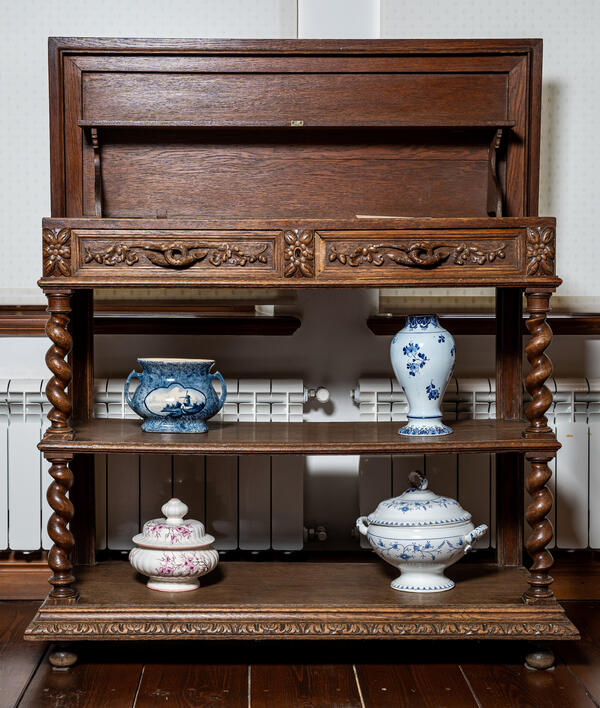Serving tables were the forerunners of modern coffee and cocktail tables, but the original purpose was completely different. They served as ‘intermediate’ for dishes that had already been brought from the kitchen, but had not yet been laid out on plates to serve on a main table.
The serving table of the late 19th century, which is exhibited in the Palace Complex of Oldenburgs, has a light marble top and a hinged lid with metal hinges. Below the tabletop there are two drawers for cutlery and other necessary trifles, as well as a shelf on which tureens, large porcelain dishes and other large service items were most often placed. The front of the drawers and an underframe - the support for the table top - is decorated with intricate carvings consisting of floral patterns.
First tables or rather, their primitive equivalents appeared in primitive society. Natural materials were used for them: pieces of trunks, twisted or forked trees, bundles of brushwood, which required minimal processing. Such items have not survived to this day, but archaeologists have found their images on cave walls.
People began to produce furniture similar to modern ones only after they learned how to saw tree trunks into boards. For the first time this craft was mastered in Ancient Egypt more than three thousand years ago. Tables then were made artlessly: they were not given such importance in everyday life and rituals as beds or sarcophagi. Egyptians had two types of tables: a dining table - round, on one stable leg - and a work table, which could be replaced by an ordinary board.
Greeks invented the prototype of serving tables - tall stand tables on three legs, where vessels with drinks were placed. Meals were held at low tables, which were taken out of the room after eating.
In the Middle Ages, tables lost their elegance: most often they were hammered from rough massive boards. During the Renaissance, when antique aesthetic ideals prevailed, serving tables again became not just furniture, but interior decoration. They were made of precious woods, decorated with carvings and inlays.
The first coffee table - then called the coffee table - appeared in England at the beginning of the 19th century. It was invented by British architect Edward William Goodwin for comfortable tea drinking. At first, he had to shorten the legs of ordinary dining tables to get the desired piece of furniture. The height of such a table was only 70 centimeters: it was convenient to put a cup of tea and dessert plates on it when guests were sitting in armchairs or on sofas. Only a hundred years later, coffee tables acquired a new function - the press was put on them.



